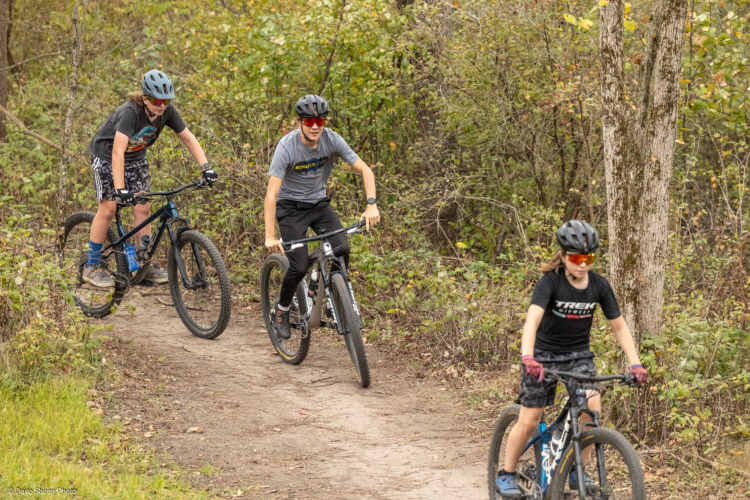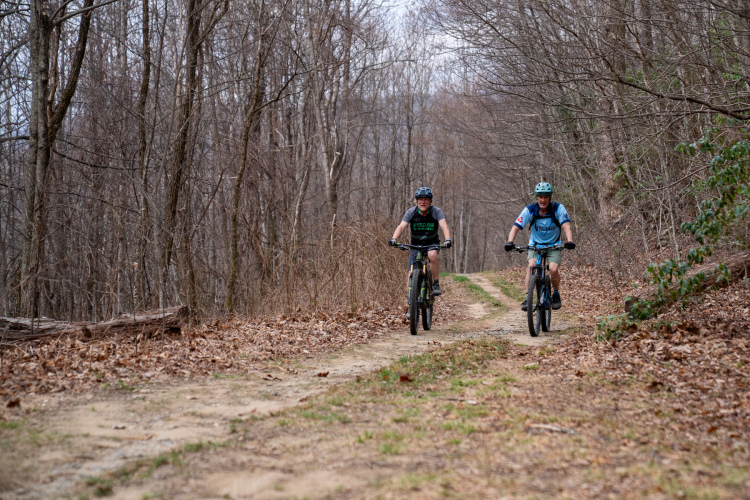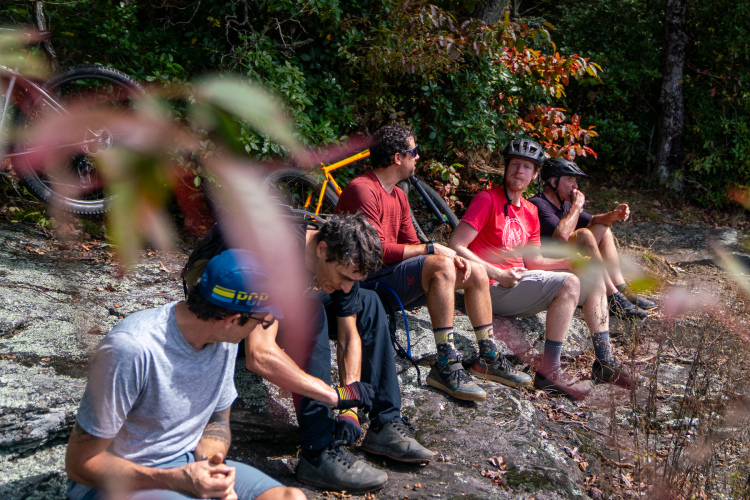
Wisconsin is known for its farms. The state produces a quarter of America’s cheese, is third in milk production, second in butter production, and ranks first in the nation for corn, cranberries, ginseng, and snap beans. It is also a leading producer of oats, potatoes, carrots, tart cherries, maple syrup, and sweet corn.
However, there is one farm near La Crosse, Wisconsin, that will soon grow experiences instead of crops. The Community Trail Farm Project is the Outdoor Recreation Alliance Trail’s (ORA Trails) idea to connect the community to itself and the outdoors. The proposed $6 million project will revolve around a robust network of shared-use trails and amenities designed to make outdoor access easier and more inclusive.
Singletracks recently spoke with Josh Hein, the project administrator for the Community Trail Farm Project, to learn about the origin of the project and when it will become a reality.

Since its inception, ORA Trails has focused on connecting people to trails
ORA Trails was formed in 2001 under the name Human Powered Trails. As its mission changed, so did its name. The organization is now dedicated to building happy, healthy, and resilient communities by providing access to equitable and sustainable outdoor recreation experiences.
ORA Trails has evolved from a group of unpaid volunteers into a five-person team working to link La Crosse and other nearby communities to trails. Its work isn’t paid for by membership dues. Instead, the organization relies on grants and donations to fund its efforts.
In recent years, ORA TRails has sought to increase its impact through land ownership and management. Hein mentioned that a conversation between the organization’s executive director and a professional trail builder led to the idea of the Community Trail Farm. “The trail builder suggested creating a place that had more than just trails. A place that connected people to the outdoors in many different ways,” said Hein.

A local farm was the perfect place for ORA Trails to create a unique outdoor experience
Located just five minutes from downtown La Crosse, the Hass Dairy farm was run by the same family for over a hundred years. The surrounding area is steeped in interesting local history.
A hill on the back side of the property, known as “The Snow Bowl,” was used for downhill skiing and ski jumping in the 1930s and 1940s. The State Road School, a one-room schoolhouse, was built on the property in the 1860s. Its most notable pupil was Louis Pammel, who became a famous ecologist and the mentor of George Washington Carver. Nearby, the Mader Brick Yard supplied bricks for most of the buildings and roads in downtown La Crosse.

The farm also has some unique topography. It lies on a big oak savannah surrounded by limestone bluffs that are hundreds of feet tall. There is a stream fed by six natural springs that runs through the property and is home to a bevy of trout. The woods on the farm also contain unique vegetation, including the morel mushroom, an elusive and expensive mushroom that is a local delicacy.
All this history, along with the unique topography and ecology of the land, made it an ideal location for a trail network that will allow a wider audience to embrace nature.

Thanks to grants and donations, the Community Trail Farm is becoming a reality
Hein told Singletracks that there were some early donors who stepped up to help ORA Trails purchase the farm. In addition, ORA Trails was awarded a $1.15 million stewardship grant from the Wisconsin Department of Natural Resources Knowles-Nelson Stewardship Program.
These funds helped it purchase the farm and begin developing its vision for the property. “Our intention is to restore some of the historical buildings on the property if we can and to highlight the history and unique ecology of the place,” said Hein.
ORA Trails is currently building five miles of singletrack on the property. This includes a one-mile all-weather gravel shared-use trail loop, a 2.5-mile dirt shared-use trail, and a 1.5-mile hiking-only trail with 450 ft of vertical elevation that includes cut stone steps. At full build-out, the farm will eventually have 15 miles of world-class hike, bike, and ski trails for all levels.
But trails are only part of the ORA Trails’ vision for the property. The farm will also have an activity center, community garden, orchard, dog park, and primitive campsites, among other things. “We are trying to create a natural space that pulls people in the same way technology does,” Hein elaborated.
According to Hein, the Community Farm will be a place where one person can go to bike while their family members or friends can hike, fish, or connect to nature in a different way, all while being on the same piece of land together.

Attendees of this year’s International Trail Summit helped kick off the initial trail building
The International Trail Summit took place in Madison, WI, this year. Prior to the start of the Summit, the Community Trail Farm hosted workshops for attendees on April 12-13, the weekend after its groundbreaking ceremony. The workshops covered topics like stonework and rigging, women’s mechanized construction, flow trail design and construction, and sustainable trail design, construction, and maintenance.
Hein said that all the work done outside of the classroom during those workshops helped with the initial construction of the trails. Additionally, being able to host the workshops demonstrated that the farm could meet ORA Trails’ objectives of being an educational facility and a recreation laboratory.

The farm is also a key piece to the connectivity puzzle for the surrounding area
Hein stated that, in addition to the people feeling a connection while on the farm, ORA Trails wants them to have connections to the property from nearby areas. To do that, the organization plans to connect the farm to existing bike routes and other trail systems in the surrounding area. “From anywhere in downtown, you are a couple of minutes away from a bluff or a river,” said Hein.
The organization is working on getting easements to connect the farm to existing trail systems. There are already adjoining property owners who have asked for easements to connect the farm to their neighborhoods. Once in place, the easements will allow the farm to become a hub of connectivity to nature.
Pammel wrote in 1924 that “[i]f we are going to keep pace with our civilization, we must give the public an outlet in the great outdoors.” Over a hundred years later, ORA Trails is determined to provide that outlet for residents in La Crosse and the surrounding area who need it now more than ever before.











1 Comments
May 19, 2025